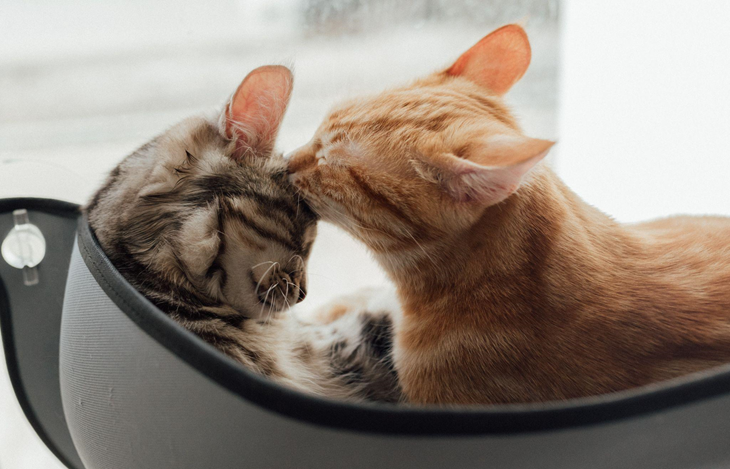Ready to add a new cat to your family? You might wonder how welcoming your cat may be to a new feline friend. Most cats tend to be unfriendly to newcomers in their territory. However, there are ways you can make the introductions way less stressful. Read on for tips from The Refined Feline that’ll make the introduction with a new cat less stressful.
Consider Your Current Cat’s Needs
Before you decide on a cat to adopt, remember that your home is already occupied by one personality. Does your cat tend to prefer male or female cats? Whichever gender your cat prefers will most likely make the transition easier. Also consider the age of the cat you’re adopting. If you adopt a young kitten for your older cat, it can work well because kittens tend to accept the older cat. Plus, the older cat will have “seniority” and help them feel less territorial. Kittens have boundless energy, though, which may annoy an elderly cat who prefers a more relaxing environment. Take all of this into account before adopting so your new cat may match your current cat’s personality better. Fostering a cat first is a great way to see how your cat will react before committing to adoption. Contact your local animal shelter or rescue to become a foster parent.
Your Resident Cat Should Get Extra Attention
Since cats are territorial, humans can be a “territory” in which your cat can become jealous. Your cat may not like the newcomer simply because they get less attention. Make sure to give your cat extra cuddles and attention when you begin introducing a new cat into your home.
Separation Is Key
Your existing cat may try to defend his territory so a slower introduction is key. It’s best to keep them in separate rooms or areas of your home until your cat is ready to accept the newcomer. Each cat should have their own separate area with a food bowl, water bowl, litter box, and cat tower to properly relax. Make sure to also spend extra time with the new cat to help put them at ease after moving into new unfamiliar territory. The cat may be scared, hide, and not want to receive affection in the first few days. But simply spending time in the same room and allowing the cat to get used to your voice and presence can help.
Introductions Need To Be Gradual
Give both of your cats time to get used to each other through the door. This can help them smell each other and be aware of their presence. Once they seem interested, you can start to bring the new cat into your cat’s territory. Do this for just a few minutes at a time & separate them if you notice your cat getting upset. You can switch and have your cat check out the new cat’s area too. Do not force the cats to interact at all, just let them do it on their own. When you begin the introduction, make sure your cat is on the other side of the door. Allow the cats to approach or ignore each other as they wish. If either cat starts getting upset or stressed, it’s time to separate them again. The next day, go ahead and do all the steps above again. You can increase the time they spend together once the cats are more comfortable with each other. If neither of them seems to mind the other’s presence, you can allow them to mingle freely.
Keep The Peace With Treats
The first time the cats encounter each other, they will probably be stressed or scared. To better keep the peace, you can give the cats a special treat when they first meet. You can continue giving treats the next few times they meet so they associate each other with special treats. Just be sure to place each cat’s treats in separate parts of the room to prevent any spats over the food.
Take Your Time & Don’t Rush
Cats are driven by routine and can get stressed out by changes, especially if they’re sudden. Your cat may take longer than you anticipate to accept their new living situation and new roommate. Don’t allow this to discourage you though. Let the cats get used to each other gradually; you can even pause for a few days if needed. Although not all cats will become best friends, there’s a good chance that the cats will tolerate each other over time.
The moral of the story is to not rush any introductions between the two cats. This can also increase the chances of your cats accepting each other and potentially becoming friends.



